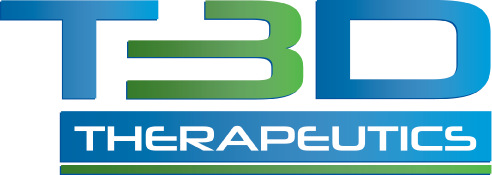Our Mission
A Transformational Approach to Treating Alzheimer’s Disease … and more.
T3D Therapeutics’ mission is to develop its lead drug product candidate, T3D-959, as a potential ‘First-in-Class’ and ‘Best-in-Class’ disease-modifying, breakthrough medicine for the treatment of Alzheimer’s disease with the potential to slow, stop or reverse the course of the disease. The Company is also seeking to maximize the therapeutic utility of T3D-959 and has initiated pre-clinical studies in Huntington’s Disease models.
T3D-959 is designed as an orally-delivered, once-a-day medicine being evaluated for the treatment of Alzheimer’s disease patients with mild to moderate disease severity, and potentially also for patients with mild cognitive impairment (MCI). The mechanism of action of T3D-959 may provide therapeutic benefit in other central nervous system (CNS) or neurodegenerative disorders via improving dysfunctional brain glucose energy and lipid metabolism which in turn, can address cerebral structural and stress events aberrations.

Innovative Ideas

Unique Mechanism of Action
T3D-959 is a PPAR delta agonist with lesser PPAR gamma activity. It is 15 times more potent for PPAR delta than for its secondary target, PPAR gamma. This particular combination confers unique biological activity and safety profiles with the potential to address the multiple medical impairments found in Alzheimer’s disease patients.

It's Time for a New Paradigm
The Company’s therapeutic approach to slow, stop or reverse the progression of Alzheimer’s disease is based on two fundamental concepts:
- Target ‘upstream’ defects found in Alzheimer’s disease, as opposed to later-occurring, ‘downstream’ manifestations of the disease by addressing DCGM (Decreased Cerebral Glucose Metabolism), which precedes and is predictive of cognitive decline.
- Target multiple defects manifested by the disease, not one, with a single drug therapy.

Clear Results to Date
- Potential improvement in cognition
- Potential to improve motor function / coordination
- Effective drug penetration into the human brain
- High safety potential
- A probable low dose range for effectiveness

